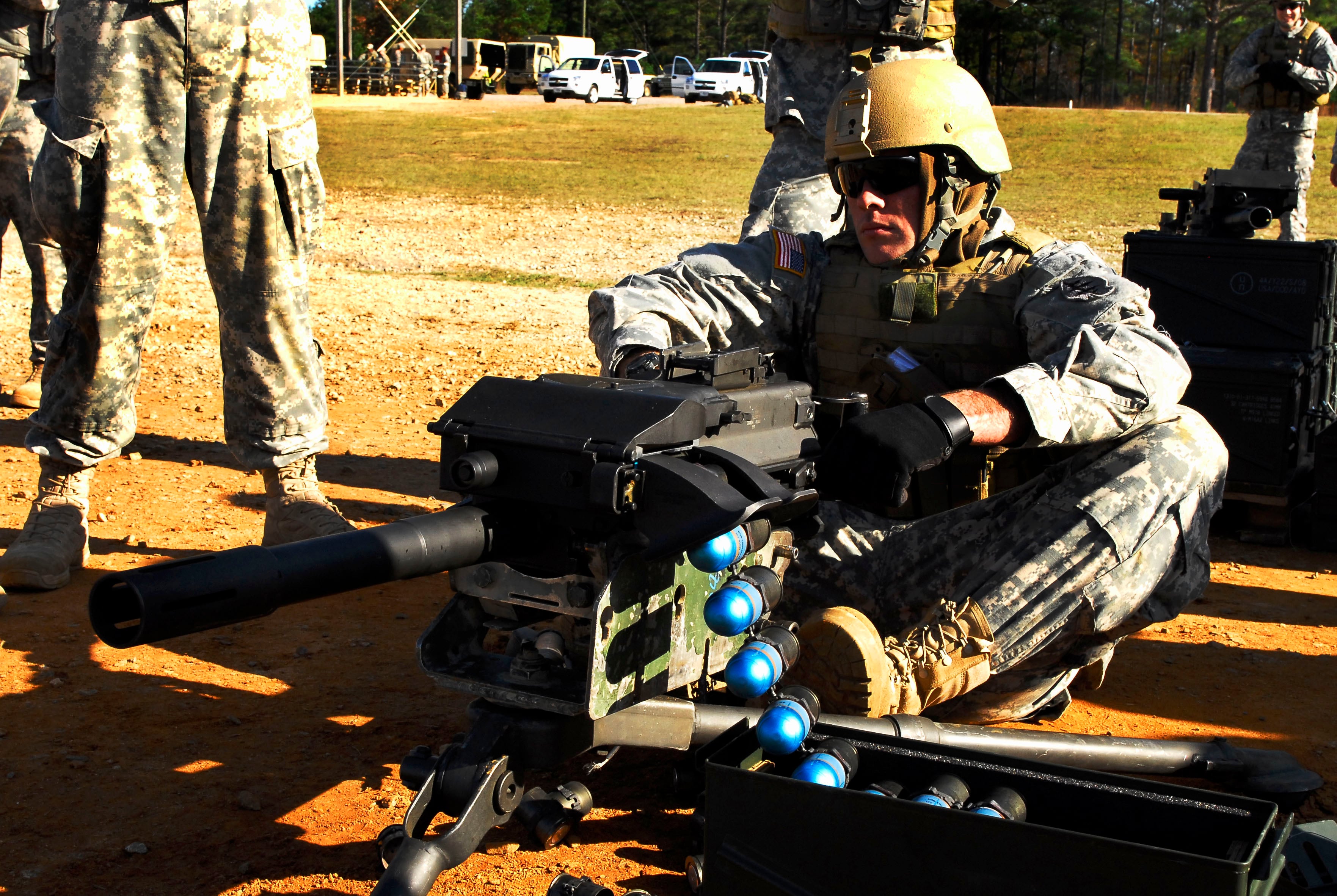A belt-fed grenade machine gun may sound deadly enough, but the Army wants to make the Mk 19 even more lethal, with improvements that could be fielded as early as 2018.
The goal? Improve the weapon's muzzle velocity, cyclic rate (rounds per minute), reliability, ease of assembly, and accuracy.
The Army is pursuing this laundry list of objectives separately, with plans to later combine them into one upgrade package. Testing is expected in fiscal 2017, which starts Oct. 1, with fielding possible the next year.
"Each improvement is at a different stage of development," said Peter Rowland, spokesman for Project Manager Soldier Wepons. "The Army is planning to produce and field the upgrade as one kit. This will allow for efficiencies in scheduling and application of improvements at one time in lieu of separate efforts."

The Mk 19 has been in use since the Vietnam War.
Photo Credit: Sgt. Katryn Tuton/Army
The particular initiatives, Rowland said via email, include the following:
• A new barrel to provide less resistance thus improving muzzle velocity.
• An improved profile for the vertical cam to reduce the force needed to charge the weapon by 20-30 pounds; that will increase the cyclic rate.
• Redesigning the round-positioning block to decrease frequency of misfires, thus enhancing reliability.
• A new cocking cam and lever design to provide a double-benefit: increased durability and shortened re-assembly time after maintenance.
• Updated mechanical sight to aid accuracy, utilizing up to date ammunition ballistic data.
The Mk19 has a range of about 2.2 kilometers to hit an area and about 1,500 meters to hit a more refined target. The tripod-mounted 78-pound weapon fires 40mm grenade rounds from a belt (generally with 32 or 48 grenades each). It currently has a cyclic rate of more than 325 rounds per minute, with a sustained rate of 40 rounds per minute and rapid-fire rate of 60 per minute.
The first version of the MK19 was produced in 1968 and used in Vietnam; it has since been altered with improvements through a handful of modifications.
The troops love the weapon, which was a finalist in Military Times' Battle Bracket contest, a March Madness-style competition to crown the best in military weaponry.





